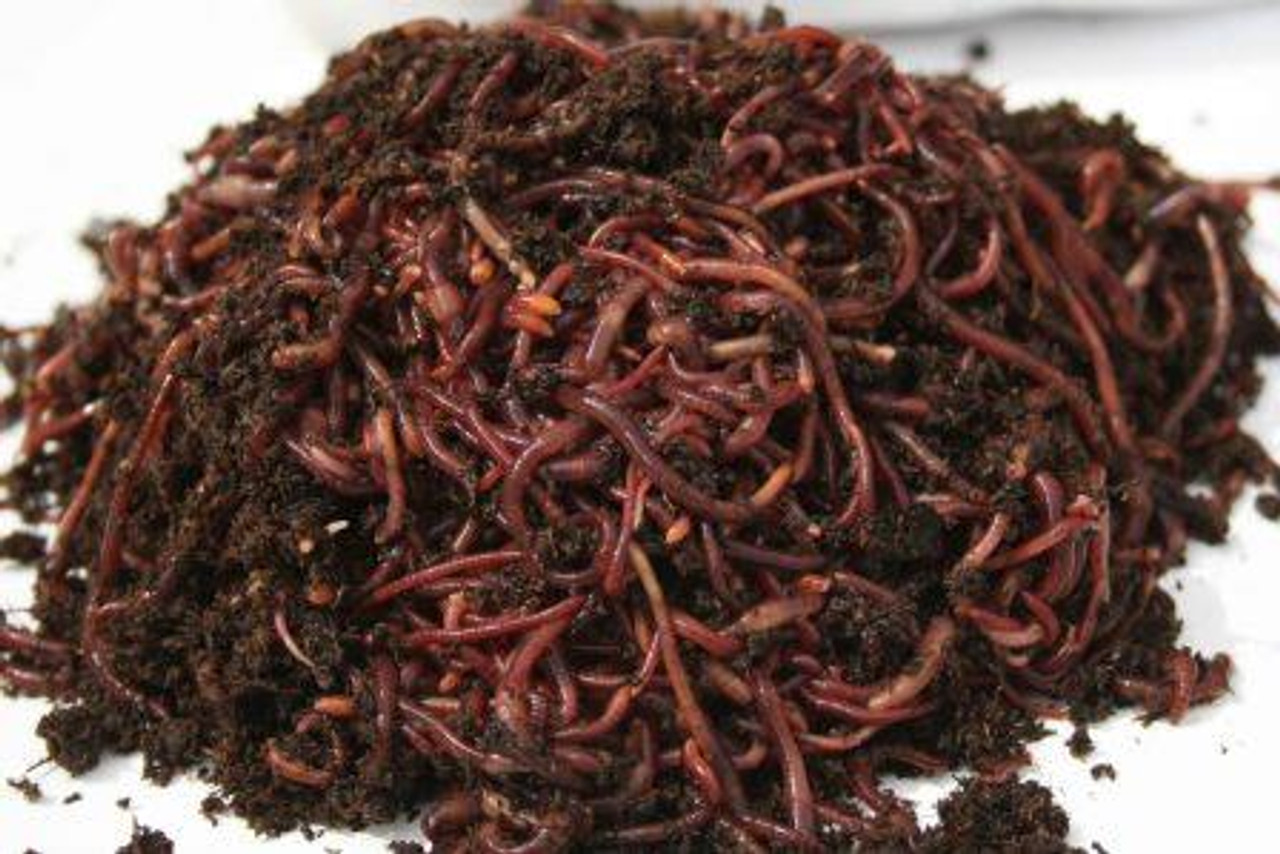Recognizing the Conveniences of Red Wiggler Composting: Exactly How This Reliable Technique Changes Organic Waste Into Nutrient-Rich Dirt Amendments
Red Wiggler composting, using the varieties Eisenia fetida, provides a compelling approach to natural waste monitoring, converting cooking area scraps and backyard debris into useful soil amendments. This method not just improves soil fertility but likewise addresses pressing environmental issues, consisting of land fill waste decrease and greenhouse gas emissions.
What Are Red Wigglers?
Red wigglers, scientifically called Eisenia fetida, are a varieties of earthworm that play a critical duty in vermicomposting systems. These worms are characterized by their reddish-brown shade, fractional bodies, and a distinctive capacity to grow in organic-rich settings, making them optimal for composting applications - Red Wiggler Composting. Unlike their garden-dwelling counterparts, red wigglers choose to populate the upper layers of dirt, where decomposing matter is plentiful
Generally gauging between 3 to 4 inches in size, red wigglers have a high reproductive rate, enabling them to increase rapidly under optimum problems. They possess a special gastrointestinal system that enables them to process natural waste efficiently, transforming it into nutrient-rich spreadings, which are highly helpful for plant growth.
Their resistance to varying wetness degrees and temperature varies further enhances their utility in vermicomposting configurations, making them a popular choice amongst composting lovers. Furthermore, red wigglers are cardiovascular organisms, which requires a well-aerated composting atmosphere, guaranteeing efficient decay. Comprehending the biological attributes and habits of red wigglers is necessary for maximizing their usage in sustainable waste management methods.

Advantages of Vermicomposting
Harnessing the power of vermicomposting offers a plethora of agricultural and ecological benefits. It considerably reduces natural waste in landfills, therefore lessening methane emissions, a potent greenhouse gas. By drawing away food scraps and lawn waste to vermicomposting, we support an even more lasting waste management system.
Furthermore, vermicomposting improves soil health and wellness. The castings generated by red wigglers are rich in crucial nutrients, germs, and enzymes, boosting dirt framework and fertility. This nutrient-rich change promotes durable plant growth and increases water retention, minimizing the need for chemical fertilizers.
In addition, vermicomposting fosters biodiversity in the dirt ecosystem. The introduction of advantageous microbes from worm spreadings help in illness reductions and nutrient biking, developing a much healthier atmosphere for plants.
Economically, vermicomposting lowers the costs related to chemical inputs and waste disposal. Farmers and gardeners can cultivate high-grade fruit and vegetables at reduced expenditures, adding to food safety and security and sustainability.
Just How to Beginning Composting
Starting a composting venture can be a straightforward and fulfilling process. This will certainly assist maintain a balanced temperature, crucial for the composting procedure.
Collect organic materials such as kitchen area scraps, lawn waste, and shredded paper. Aim for a well balanced mix of 'eco-friendly' products, high in nitrogen (e.g., fruit scraps, coffee grounds), and 'brown' products, rich in carbon (e.g., dried out leaves, cardboard) A proportion of about 2:1 eco-friendly to brown products is optimal.
Beginning layering your products, making certain ample air blood circulation by turning the stack routinely. This promotes cardiovascular decay, speeding and reducing smells up the process. Screen moisture levels; the compost needs to feel like a moist sponge however not excessively wet.
Nutrient Profile of Vermicompost
Composting, specifically with red wigglers, produces a nutrient-rich item understood as vermicompost. This organic modification is differentiated his comment is here by its high concentration of vital nutrients, making it an invaluable resource for horticulture and farming. Vermicompost normally contains elevated degrees of macronutrients such as phosphorus, nitrogen, and potassium, which are essential for plant development. Additionally, it offers trace elements like iron, calcium, and magnesium, promoting robust plant development and improving dirt wellness.
The microbial task present in vermicompost additionally improves its profile, introducing advantageous bacteria and fungi that promote nutrient availability and uptake in plants. This biological component help in subduing plant conditions and boosting soil structure, leading to improved water retention and oygenation.

Ecological Effect of Composting
The environmental effect of composting, especially with making use of red wigglers, is diverse and profound. This method substantially lowers the quantity of natural waste sent to land fills, which subsequently reduces greenhouse gas exhausts, specifically methane-- a powerful factor to environment change. By drawing away natural materials from garbage dumps, red wiggler composting not just assists mitigate environmental destruction however also promotes sustainable waste administration practices.

Moreover, composting contributes to carbon sequestration, as the procedure records carbon dioxide from the atmosphere and shops it in the soil. This all-natural procedure aids in combating climate modification while enhancing the soil - Red Wiggler Composting. Overall, red wiggler composting provides a practical, environment-friendly option for waste administration and environmental sustainability, promoting healthier ecosystems and a more lasting future
Verdict
To conclude, over here Red Wiggler composting functions as a reliable approach for transforming natural waste right into beneficial soil amendments. The procedure not only improves soil fertility and structure but likewise minimizes ecological issues associated with waste disposal. By utilizing Eisenia fetida, this kind of vermicomposting adds to boosted biodiversity and sustains lasting agricultural methods. Eventually, Red Wiggler composting plays a vital duty in promoting much healthier environments and resolving the difficulties of climate modification.
Red Wiggler composting, using the types Eisenia fetida, offers an engaging strategy to natural waste administration, converting kitchen area scraps and lawn particles into useful dirt modifications. Unlike their garden-dwelling equivalents, red wigglers favor to live in the upper layers of soil, where decomposing matter is bountiful.
The castings produced by red wigglers are abundant in essential nutrients, microorganisms, and enzymes, enhancing soil structure and fertility. The nutrient-rich by-products of red wiggler task enhance soil structure, rise water retention, and advertise biodiversity within the dirt environment.In conclusion, Red Wiggler composting offers as an efficient approach for transforming organic waste right into useful soil modifications.